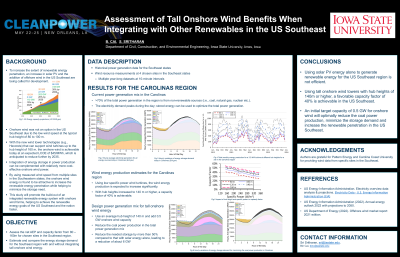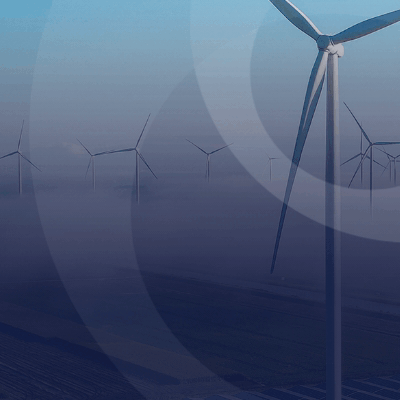Market Trends & Outlook
Assessment of Tall Onshore Wind Benefits When Integrating with Other Renewables in the US Southeast

- SS
Sri Sritharan
Distinguished Professor
Iowa State University
Ames, Iowa
Presenter(s)
Presentation Description: To increase the extent of renewable energy penetration, states in the US Southeast are set to grow targeted amounts of solar PV and offshore wind production while phasing out aging coal plants in the region. This can lead to additional battery storage when renewable resources are not pronounced and the renewable power generation is less than the demand, causing more expenses when increasing renewables. While solar and offshore wind costs are falling along with technology advancements, the effort of integrating storage in power production can be complemented with relatively more cost-effective onshore wind power. Onshore wind was not an option in these regions due to the low wind speed at the hub height of 80 to 100 m. However, with the newly developed tower technologies (e.g., Hexcrete) that can support wind turbines up to the hub height of 160 m, the onshore wind is achievable today at an expected LCOE of $40/MWh, which is anticipated to reduce further by 2035. By using measured wind speed from multiple sites in the Southeastern states, the presentation will assess the required onshore wind power to minimize the usage of battery storage while meeting the electricity demand in the region. The presentation will further compare the additional battery storage cost with and without onshore wind power for an increased hub height of 140 m. This finding will promote the build-up of an integrated renewable energy system with onshore wind farms, helping to achieve the national renewable energy goal faster.
Learning Objectives:
- Upon completion, participants will be able to assess the wind energy potential and the resultant economic impacts of using tall wind towers for onshore wind energy in the US Southeast.
- Upon completion, participants will be able to visualize and project the economic benefits of onshore wind technology for the US Southeast based on LCOE and power generation estimates.
- Upon completion, participants will have a better appreciation for tall land-based wind and planning to build both onshore and offshore wind farms will be valuable for the US Southeast.

.jpg)
.jpg)
.png)
.jpg)

.jpg)